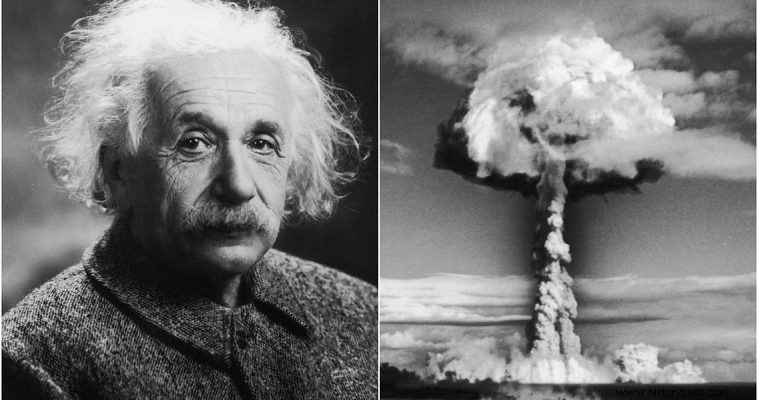
On October 11, 1939, the economist Alexander Sachs delivered to then US President Franklin D. Roosevelt a letter that would change the course of 20th century history. The author of the letter was the Nobel Laureate in Physics Albert Einstein and its content referred to the urgent need for the USA to build an atomic bomb in order to prevent its development by Nazi Germany.
The letter was written by Einstein on August 2. At least he had signed it that day, as its text had been largely drafted by the Hungarian physicist Leo Szilard and his Hungarian colleagues Edward Teller and Eugene Wigner.
In it, the scientists emphasized that the Nazi regime possessed the know-how to develop and use atomic fission to build an atomic bomb. In the letter, Einstein et al urged Roosevelt to order research that would accelerate the construction of an American bomb.
Einstein had entrusted the letter to Sachs, but he hesitated to deliver it immediately to Roosevelt. But when the president had expressed his concern about the Nazi invasion of Poland on September 1, 1939, he decided to do it.
After hearing the introduction of the economist who summarized the contents of the letter, Roosevelt immediately ordered the formation of the Advisory Committee on Uranium. The committee met for the first time on October 21, under Lyman Briggs, director of the National Institute of Standards and Technology. An initial grant of $6,000 has been approved for experiments conducted on neutrons by the Italian Enrico Fermi at the University of Chicago.
In the letter, Einstein emphasized:"during the last four months it is possible - thanks to the work of Joliot in France and Fermi and Gillard in America - that it has become possible to achieve a nuclear chain reaction in a large mass of uranium, by which large quantities and large quantities of forces can be produced, commensurate with that of radium.
“This new phenomenon could very well lead to the construction of a bomb, and it is very likely – though not yet entirely certain – that new types of bombs could be produced. A single bomb of this type, carried by ship and detonated in a port, could easily destroy the whole of it and a portion of the adjacent area. However, these types of bombs would probably be too heavy to be carried by an aerial vehicle".
This letter is widely considered to have given life to the "Manhattan Project", which during World War II dealt with and resulted in the manufacture of the atomic weapons that destroyed the cities of Hiroshima and Nagasaki in 1945.
But the whole process up to the American atomic program was very complicated:the Uranium Advisory Committee was not enthusiastically involved in the construction of the weapon, while two other committees that replaced it (the National Defense Research Council and the Office of Scientific Research and Development) got nowhere, until the research was assigned to the engineering school of Manhattan University, to give birth to the "Manhattan Project" for the fission of uranium and the mass production of atomic weapons.
Einstein himself, although he proposed it, did not work on the construction of the atomic bomb. According to the Nobel Prize in Chemistry Linus Pauling and his close friend, but as also claimed by other sources of the Disarmament movement, the father of the Theory of Relativity regretted that he had agreed to sign this letter.
SOURCE:APE-ME
